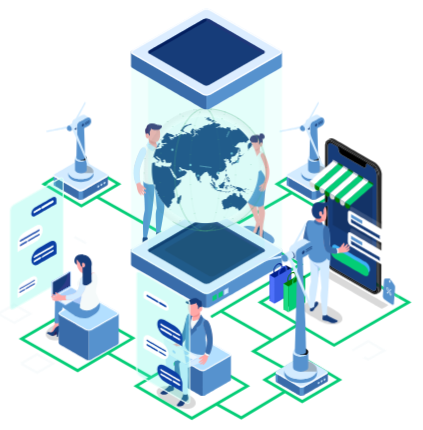Systems Integration
Take your business to the next level with our
Systems integration
Giving our clients a great chance to step into the future by leaving their traditional means of communication between systems and businesses, ‘System Integration’ is a service that’s being daily at Sentinel Technologies. Businesses must address dynamic systems integration problems both within their own walls and with their external collaborators, vendors, and consumers to harness the potential of technology. The method of operationally connecting different computer systems or software applications into a single larger structure, allowing each solution to functionally operate together, is known as System Integration.
The aim of integration is to piece together a puzzle. Your organization’s information subsystems are basically dispersed and must be brought together into a well-coordinated, coherent infrastructure or an interconnected device mesh. It’s surely a complicated construction mechanism that links an organization’s functions from various structures, including internal hardware, applications, and communications.

Sentinel Technologies will never let you down!
Designed, developed, and what can be integrated on any of the industry’s leading tech platforms – we’re here to make smart decisions on the best framework to match your needs and goals based on your familiarity with these platforms.
Increase Productivity
Productivity can inevitably rise because of system integration since your data would be in the same format with a single view, making room for more thorough review.
Easy to Learn
User implementation would be fast and learning time would be half because there would be only one system to learn from.
Automation
The rekeying errors would be reduced through several applications by automating the process.
Data Security
Having all your data in one place would save your disc space and money. The risk of a data loss is decreased because all your data is stored in one device.
Methodology
Agile development model to maximize success
Get Accelerated Results and Decelerated Errors.The requirement is the very first step in the SDLC process. It is to be conducted by the senior team members with inputs from all the stakeholders and experts of a specific industry. Planning for quality assurance requirements along with recognition of the numerous risks is also done at this stage which in turn gives a clear picture about the scope of the project, any impending issues, opportunities, and directives, which kickstarted the project in the first place.
In the next phase, the system and software design documents are prepared according to the requirement specification document. This assists in defining the overall structure and system. Here, design stage serves as an input for the next stage of the model.
Once the system design phase is over, the next phase is coding or development. At this stage, trained developers start building the whole system by writing a code, using the chosen programming language.
When the software is completed, it is deployed in the testing phase. A testing team starts testing the functionality of the whole system which is done to verify whether the entire application works according to the customer requirement or not.
As soon as the testing phase of the software is done, and no bugs or errors are left to be taken care of, then the final deployment process begins. Based on the project manager’s feedback, the final software is released and checked for any deployment issues.
Now when the system is deployed, and clients start using the software, the following 3 activities take place: –
- Fixing Bugs – Any bugs reported, due to various reasons which had not been tested at all.
- Upgrade – Upgrading the application to newer, better versions of the software.
- Enhancement – Adding new, smart features into the existing software.


